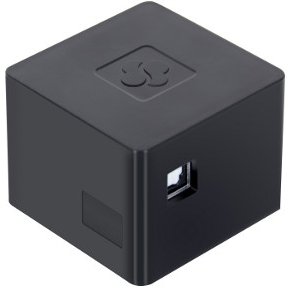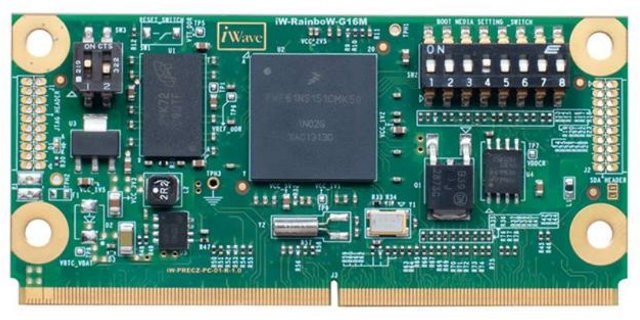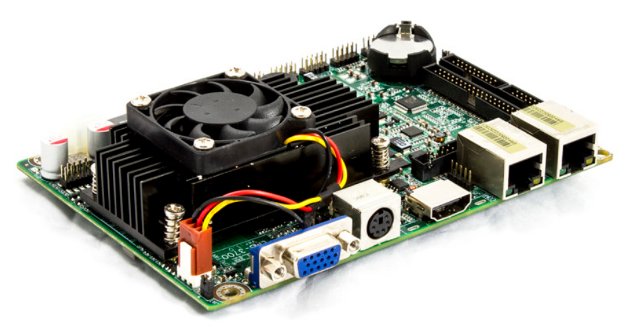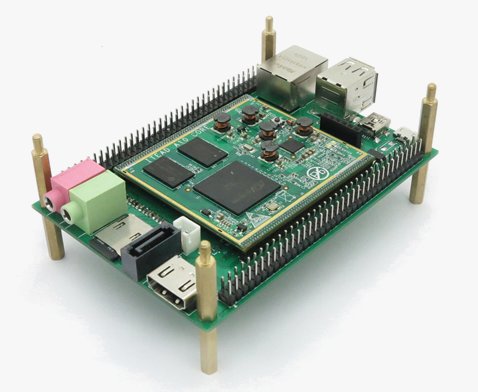SolidRun has been providing tiny development platform such as Cubox and Cubox Pro featuring Marvell ARM compatible processors. However, the price of those platforms are well over $100, so the company decided to provide lower cost development platforms (Cubox-i) based on Freescale i.MX6 Solo/Dual Lite/Dual/Quad that sells for $45 and up. There are four versions: Cubox-i1 – Freescale i.MX6 Solo, 512 MB RAM, 10/100M Ethernet, optional Wi-Fi/Bluetooth module. Price: $44.99 Cubox-i2 – Freescale i.MX6 Duallite, 1GB RAM, 10/100M Ethernet, optional Wi-Fi Bluetooth module. Price: $69.99 Cubox-i2Ultra – Freescale i.MX6 Dual, 1GB RAM, Gb Ethernet (470 Mbit real), Wi-Fi and Bluetooth, SATA II. Price: $94.99 Cubox-i4Pro – Freescale i.MX6 Quad, 2GB RAM, Gb Ethernet (470 Mbit real), Wi-Fi and Bluetooth, SATA II. Price: $119.99 The devices measure 55mm x 55mm x 42mm. The full specifications are better seen in the comparison table found in SolidRun website. The 4 models all boot […]
Embedded Linux Conference Europe 2013 Schedule – Build Systems, Security, Device Tree, Debugging & Profiling Techniques, and More
Embedded Linux Conference Europe 2013 will conveniently start right after LinuxCon 2013, last 2 days (October 23-24), and take place at the same location: the Edinburgh International Conference Center, Edinburgh, United Kingdom. The Linux Foundation has published the schedule for the conference, so I’ll make my own virtual schedule with sessions that I find particularly interesting. Thursday – 24th of October 9:30 – 10:10 – Timeline For Embedded Linux by Chris Simmonds, Consultant, 2net Limited Today, Linux is woven into the fabric of our technology. Things such as printers, routers, TVs and phones all have their own “Inner Penguin”. Yet it was never originally intended to be used beyond desktop and server PCs. A lot of things had to happen before Linux could break out of the PC environment and make its way in the world as a jobbing jack-of-all-trades. Since the early beginnings of embedded Linux in the late 1990’s many people have contributed […]
Linaro 13.08 Release With Linux Kernel 3.11 and Android 4.3
Linaro 13.08 has been released with Linux Kernel 3.11-rc6 (stating), Kernel 3.10.9 (LSK – beta), and Android 4.3. This month is the first release based on Android 4.3, which was only pushed to AOSP at the end of last month. I can also see work on new SoCs/hardware this month with Texas Instruments Keystone II ARM Cortex A15+DSP SoC and Fujitsu AA9 board (Which processor?, I could not find out). A lot of work also appears to have gone in OpenEmbedded, further optimizations have gone into NEON optimized AES encryption in OpenSSL, and more. It’s also the first time I can see a Ubuntu Raring engineering build image for HighBank (Calxeda Energycore). Here are the highlights of this release: Android Engineering Android stack was tuned to achieve 100% CTS pass result on Android 4.3 Analyzing the UEFI EDK II boot loader for Android completed, implementation of fastboot application and USB […]
RK2928 Miracast Adapter (MOCREO M1) Is Now Available for $26
Rockchip (via Charbax) has been teasing us with their upcoming RK2928 miracast adapter since the Hong Kong Electronics Fair in April 2013. It appears a device is finally available on DealExtreme with MOCREO M1 (iPush) for $25.90 including shipping. It’s using the same casing as the other iPush or Ezcast (MSD03) HDMI sticks, but the guts of the device are different: Processor – Rockchip RK2928 single core ARM Cortex A9 @ 1.0 GHz System Memory – 256MB DDR3 Storage – 16 MB Serial Flash Connectivity – Wi-Fi: 802.11b/g/n Video Output – HDMI V1.4 Multi-screen protocol – DLNA / Airplay / Miracast Video Format – RMVB / WMV / ASF / AVI / 3GP / MPG / MKV / MP4 / MOV / MPEG2 / MPEG4 Audio decoding – MP3 / OGG / WAV / APE / CDA / MIDI / WMA / AAC; Power adapter: 5V / 1A (Micro USB) […]
iWave Systems Introduces RainboW-G16M µMXM SoM Powered by Freescale Vybrid ARM Cortex A5 / M4 SoC
iWave Systems has unveiled new microMXM system-on-modules powered by Freescale Vybrid dual core ARM Cortex-A5 @ 500Mhz and Cortex-M4 @ 167 Mhz SoC. Rainbow-G16M modules target applications that can leverage the Cortex M4 MCU for real-time tasks, and the Cortex A5 core for application processing such as industrial process control & kiosks , smart grid, medical / healthcare devices, smart connected devices, and battery operated handheld devices. Here are the module specifications: SoC – Vybrid VF6x Series Controller with ARM Cortex A5 core @ 500Mhz, and Cortex M4 core @ 167 MHz System Memory – 256 MB DDR3 (Expandable upto 1GB) Storage 256MB NAND Flash (Expandable up to 2GB) QSPI Flash (Optional) EEPROM (Optional) On Board peripherals support: On module 10/100 Ethernet PHY JTAG Header for processor (Optional) Open SDA Header (Optional) DIP Switch for boot settings (Optional) 314-pin MXM PCB Edge Connector Interfaces: 10/100 Ethernet PHY interface 2nd RMII […]
Habey EMB-3700 Embedded Board Features AMD G-Series SoC
AMD recently announced their G-Series SoC family that combines a CPU, a GPU, and a controller hub into a single chip, as ARM has been doing for a while, and more products based on the platform are entering the marketplace. I’ve already written about Win Enterprises MB-60830 and Netboard A10 single board computers, and today I’ll introduce another option with Habey EMB-3700, a 3.5″ embedded board that targets applications such as digital signage, point-of-sale (PoS), industrial automation, machine to machine, in-vehicle telemetry, and medical technology. Habey EMB-3700 Specifications: SoC: GX-420CA quad core @ 2.0GHz (25W TDP) with Radeon HD8400E or GX-415GA quad core @ 1.5GHz (15W TDP) with Radeon HD8330E or GX-210HA dual core @ 1.0GHz (9W TDP) with Radeon HD810E System Memory – 1x 204-Pin DDR3 SODIMM, up to 4GB (ECC) RAM Storage – 2x 6Gb/s SATA 3.0 connectors Video Output: HDMI up to 1920 x 1200 VGA up […]
LinuxCon Europe 2013 Schedule – Web Technologies, Debugging Techniques, Wayland, and More
I’ve just received an email from the Linux Foundation saying the schedule for LinuxCon and CloudOpen Europe 2013 had been made available. The conference will take place for 3 days (October 21-23, 2013) in the Edinburgh International Conference Center, Edinburgh, United Kingdom. There will be over 100 conference sessions, and several co-located events including: Automotive Linux Summit, the Embedded Linux Conference, Gluster Workshop, KVM Forum, Tizen Summit, Xen Project Developer Summit. As I’ve recently done with LinuxCon North America 2013 and ARM TechCon 2013, I’ll make a virtual schedule with selected developer sessions using the event’s schedule builder. You may find out several sessions will also be given in LinuxCon North America. Monday – 21st of October 11:00 – 11:50 – Bluetooth Smart Devices and Low Energy Support on Linux by João Paulo Rechi Vita, INdT This presentation will cover a brief introduction on how the Bluetooth Low Energy technology […]
$59 Iteaduino Plus ARM Linux Board Features Raspberry Pi and Arduino Compatible Headers
Iteaduino Plus is a development platform designed by ITEAD studio, a Shenzhen based company, powered by AllWinner A10 with 1GB RAM, a micro SD card slot, expansion header, etc… Overall features are very similar to the Cubieboard, but the platform is comprised of a baseboard and a CPU module. The baseboard features a 26-pin GPIO header compatible with the one on the Raspberry Pi, and you can add an expansion board to connect Arduino Shields. Iteaduino Plus specifications: SoC – AllWinner A10 Cortex A8 @ 1GHz with Mali400 GPU System Memory – 1GB DDR3 @480MHz Storage – 1x micro SD slot, 1x SATA Video Output – HDMI Connectivity – 10/100M Ethernet USB – 2x USB Host, 1x USB OTG Audio – 3.5mm Audio in and out jacks Expansion headers (see pin assignment) 2x 2×36-pin (Total 144, but not all used) – I2C, SPI, RGB/LVDS, CSI/TS, FM-IN, ADC, CVBS, VGA, SPDIF-OUT, […]










